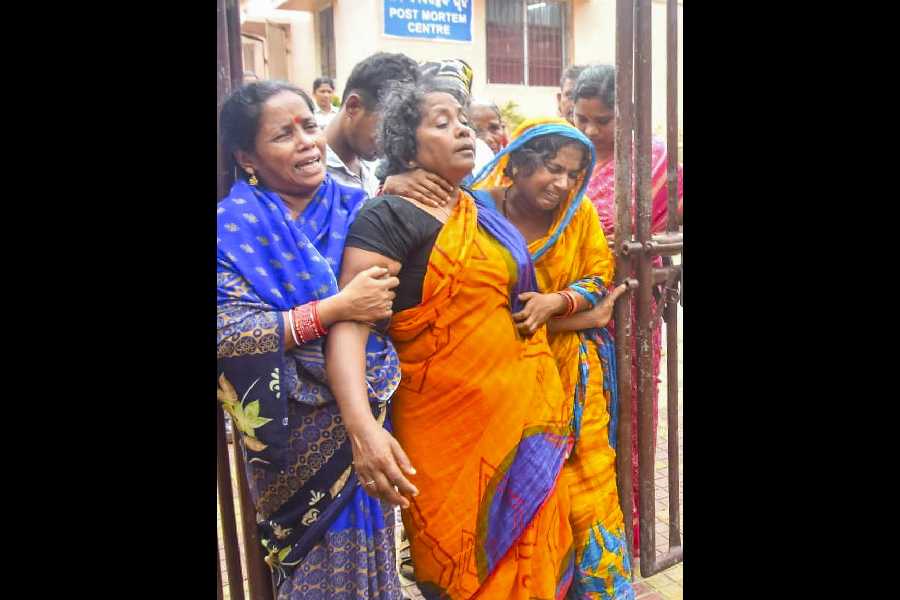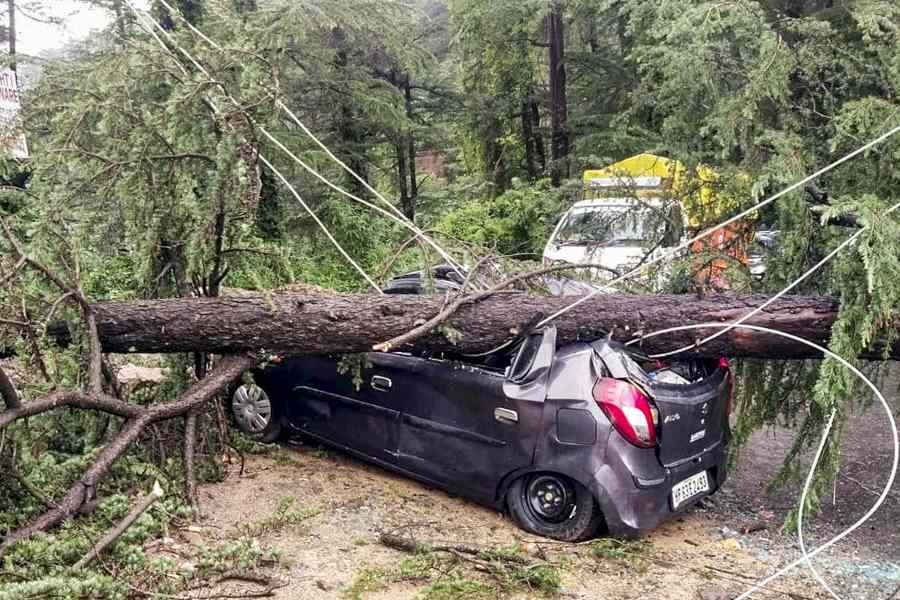 |
| The tower of the long-defunct crematorium for Christians in the deathly embrace of parasitical plants. The burial board wants to revive the crematorium. Picture by Sanjay Chattopadhyaya |
The crematorium on the street named after it, behind the walls of the Lower Circular Road cemetery for Christians, has been under the Christian Burial Board (CBB) for ages — over a century.
But trespassers, who keep it under lock and key, have used it as a garage for a long time, and in the recent past, have turned the actual “chamber” in which bodies used to be incinerated into a bed. The last time it was used was in the late Seventies. Once, Brahmos used it, too. Jagadish Chandra Bose was cremated here.
A brick-and-mortar structure with a tower that was used as a chimney and with Gothic arches at its entrance and above the windows, it is definitely over 100 years old.
The furnace was manufactured by Toisoul Fradet & Co, Paris. The building is firmly in the grips of a parasitical plant. Recently, the Calcutta Municipal Corporation (CMC) has announced that the structure at 2, Crematorium Street will be turned into a mortuary for six bodies, in a joint venture with Hindu Satkar Samity.
Both mayor Subrata Mukherjee and Pradip Ghosh, mayoral council member (health) have made announcements to this effect, without stating a date for implementation. Ghosh said over the telephone on Friday that the grounds are 100 per cent CMC property and could be put to whatever use the CMC wanted.
Ranajoy Bose, executive member of the CBB, says the statutory body is aghast at this unilateral decision. The CBB was allotted 99 bighas. According to the Bengal Obituary, the Lower Circular Road Cemetery opened on April 26, 1840, for the remains of Captain E.T. Milner’s Child. The CBB was constituted as a statutory body in 1881. Crematorium Street, built later, passes through this land. There is a small graveyard adjoining the crematorium. The Lower Circular Road graveyard, too, is on this plot. The CBB was never informed about the CMC decision.
Bose says it is Asia’s first gas crematorium and the CBB has been trying to revive it for some time, and has written to the CMC to that effect. The CBB is prepared to bear the cost of revival.
The Oriental Gas Company had commissioned the gas crematorium. During Dr BC Roy’s regime, the Oriental Gas Company got its supplies from the Durgapur gas grid.
Earlier, supplies came from the gas plant in Rajabazar. Supplies from Durgapur were erratic. So the crematorium closed down in the Seventies. Now, the Oriental Gas has been renamed the Greater Calcutta Gas Supply Corporation and supplies come from Dankuni.
This corporation has given the CBB the assurance that supplies have stabilised and the burning capacity can be made more powerful than earlier. So why cannot it be revived, considering that in these days of rising real estate costs, urn burials are so much more cheaper?
The tower is high enough and given the city’s dwindling Christian population, there is little risk of pollution. Besides, the huge Nonapukur tram depot is next to it. There is some vacant land in the crematorium where CBB staff can be accommodated. This is, indeed, a burning question for Christians.











